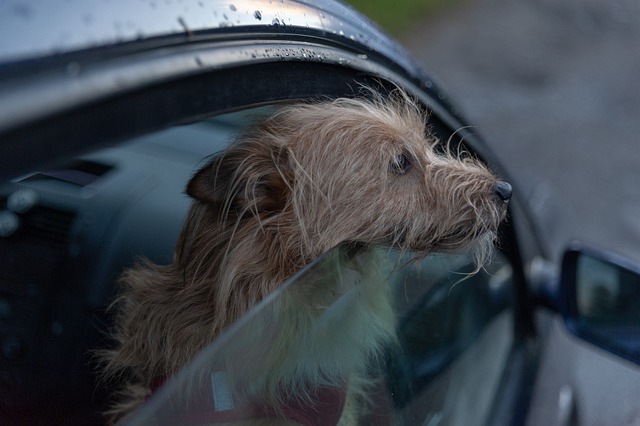The idea that “dogs love to ride in the car” hearkens back to the days of the horseless carriage. The slobbery truth, however, is that dogs can suffer from motion sickness, just as some people can. Before taking Fido along on that next road trip, be sure to do some research.
Why Do Dogs Get Carsick?
The science behind dog carsickness is a bit hazy, but it seems that dogs get carsick for the same reasons that people do. Your dog’s inner ear fluids slosh around when riding in a car, and if their neurological input doesn’t match what Rover is seeing, nausea can be the result. When humans drive cars, for example, carsickness is almost never a factor because they can see the road ahead and predict movements such as turns and stops. It’s generally ill-advised to let your dog drive, however.
What Are the Symptoms?
The most obvious manifestation of dog carsickness requires a wet/dry vac and some deodorizer, making you wish they still made vinyl car seats. More subtle symptoms include excessive drooling, panting, lip smacking, or yawning. Your mutt may also seem nervous or listless. If more than nine people are required to drag your terrified, whining pooch into the backseat, this may also be a sign.
What Can Be Done?
Anxiety may be the cause of your dog’s plight. If Spot’s only car rides are to the vet for neutering and shots, you can hardly blame him. Dogs make associations, just as humans do. To prevent this, take your dog for short rides to places you know they enjoy, like the park or the river. Give a treat when they get in the car, and keep a special toy in the backseat just for car rides.
Try the same remedies that work on humans. Instead of a crate or kennel, use a dog harness that allows them to face forward and see out the window. Of course, crates are easier to hose out if Lucky gets unlucky, but you’d save her a lot of potential misery. Lining the seats and floor with old towels is smart insurance against accidents.
If you put your pooch in the front seat so he gets the clearest view of the road, keep in mind that the passenger airbag can potentially kill your pal if there’s a collision, so be sure to turn off the passenger airbag during your drive. If this isn’t possible, slide the seat as far back from the dashboard as you can.
Other helpful ideas include limiting the amount of food given to your dog before a scheduled trip, lowering the windows a bit to balance out the air pressure inside the cabin, and giving them a small, sugary treat before you leave. Tiny amounts of sugar seem to help with carsickness, but be sure to never give dogs chocolate or any candy containing xylitol, as both of these are toxins for them. Medications are available from your vet if none of these remedies work.
Nothing brings canines and their human servants together like car trips. Do everything you can to make these rides as pleasant, safe, and relatively clean as possible. Both Bowser and your upholstery will thank you for it!
Image by Radosław Zmudziński from Pixabay






